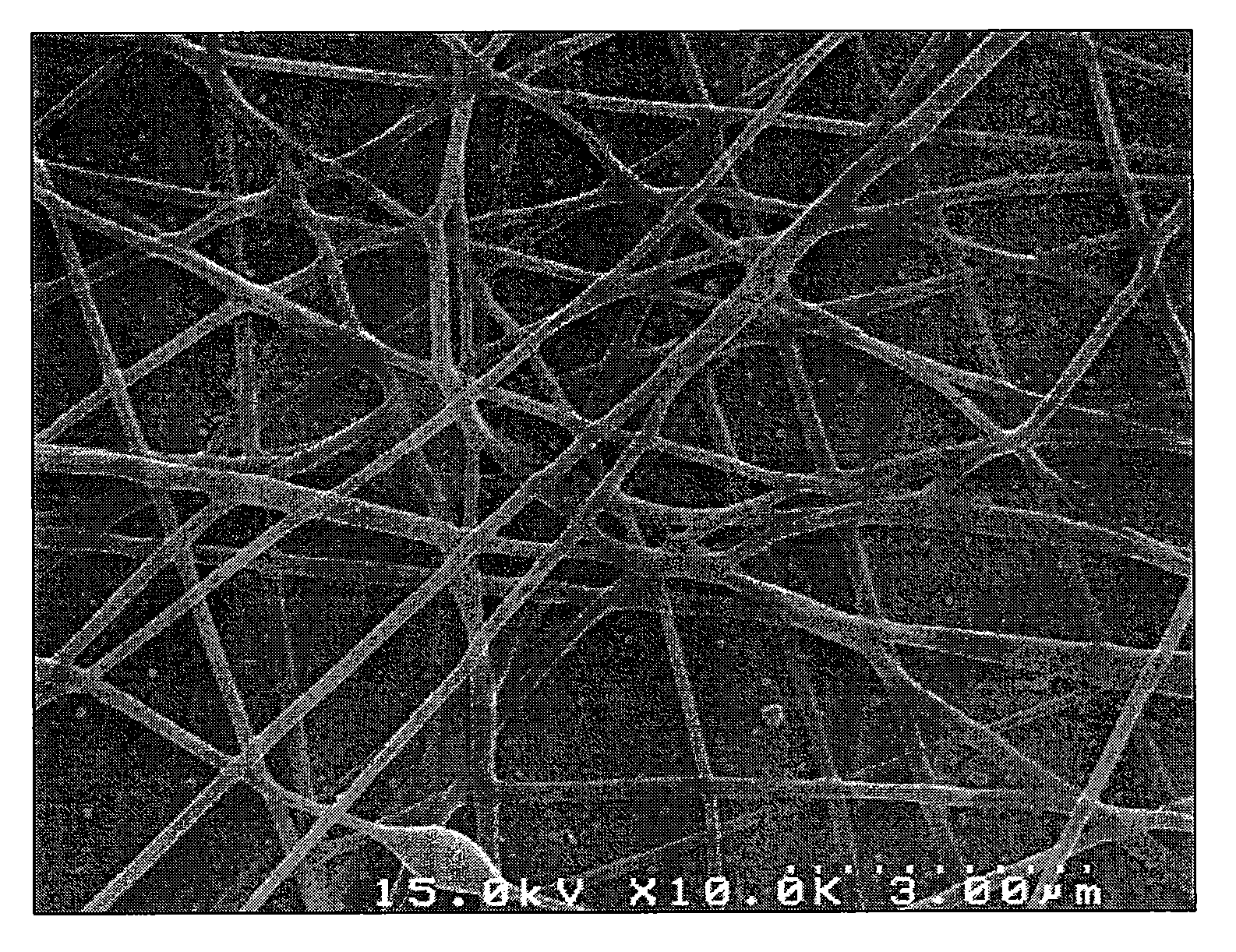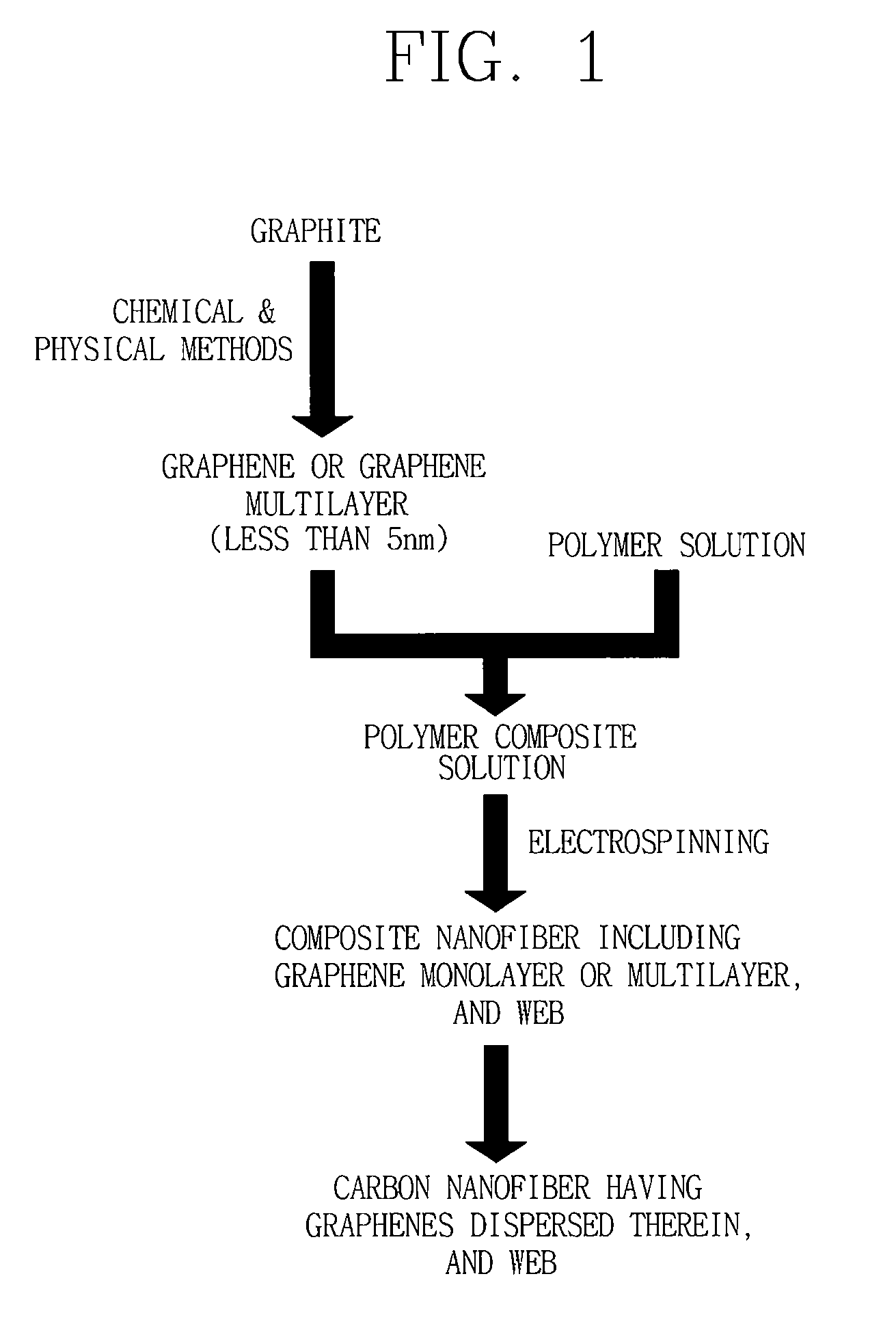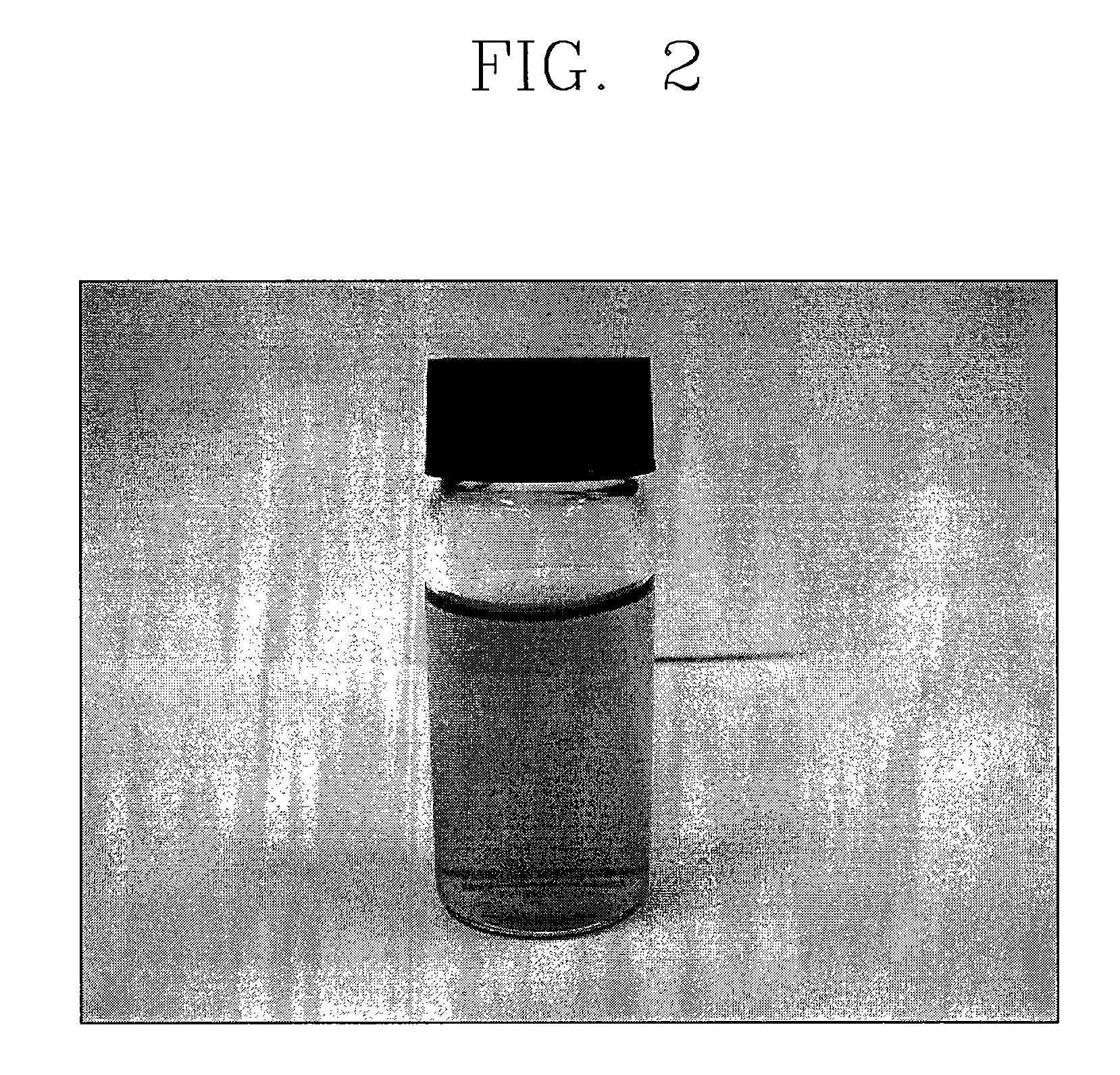Graphene composite nanofiber and preparation method thereof
a graphene composite and nanofiber technology, applied in the field of graphene composite nanofibers, can solve the problems of graphenes having a difficult time being processed and treated like other carbon allotropes, and research on a method for forming graphene composites with a nanoscale one-dimensional structure has never been executed
- Summary
- Abstract
- Description
- Claims
- Application Information
AI Technical Summary
Benefits of technology
Problems solved by technology
Method used
Image
Examples
first embodiment
[0055]10 g of graphite (Aldrich) was put in a flask containing 7.5 g of NaNO3 (99%). Next, 621 g of H2SO4 (96%) was slowly added to the mixture, and was cooled. To this mixture, 45 g of KMnO4 was slowly added for 1 h. The mixture was cooled for 2 h, and then was reacted for four days while being slowly stirred at 20° C. Next, a solution having a high viscosity was diluted in 250 mL of exceptionally high purity distilled water with maintaining a temperature below 50° C., and then was stirred for 2 h. To this resultant, added were 700 mL of exceptionally high purity distilled water and 20 mL of H2O2 (30%), thereby producing a yellow solution with bubbling. Next, this mixed solution was filtered, and metallic impurities were removed by using 1 L of HCL aqueous solution (volume ratio of HCl:H2O is 1:10). Next, the mixed solution was washed a plurality of times with using exceptionally high purity distilled water, thereby having a neutral pH value. Next, residual metallic ions in the mix...
second embodiment
[0057]Graphite layers were consecutively exfoliated with using a cellophane tape, thereby producing a multilayer graphenes film having a thickness of 5 nm or less. 0.3 g of the graphite produced in a mechanical manner was added to 20 mL of H2SO4 (96%) at 0° C. To this mixture, 15 g of KMnO4 was slowly added with maintaining a temperature of 20° C. This mixed solution was stirred for 2 h with maintaining a temperature of 35° C. Next, the mixed solution was diluted in 120 mL of exceptionally high purity distilled water with maintaining a temperature below 50° C., and then was stirred for 2 h. To this resultant, added were 700 mL of exceptionally high purity distilled water and 20 mL of H2O2 (30%), thereby producing a yellow solution with bubbling. Next, this mixed solution was filtered, and metallic impurities were removed by using 1 L of HCL aqueous solution (volume ratio of HCl:H2O is 1:10). Next, the mixed solution was washed a plurality of times with using exceptionally high purit...
third embodiment
[0059]The graphenes / PAN composite nanofiber prepared according to the second embodiment underwent an insolubilization process in air at 260° C. (during the insolubilization process, polymers are heated, and have a net-shaped three-dimensional structure thus to be cured. Accordingly, in case of forming a carbon fiber, it is more advantageous for a cured resin to undergo a graphitization process). Then, the graphenes / PAN composite nanofiber was carbonized up to 1400° C. under a nitrogen atmosphere, thereby preparing a graphene composite carbon nanofiber.
PUM
| Property | Measurement | Unit |
|---|---|---|
| Thickness | aaaaa | aaaaa |
| Diameter | aaaaa | aaaaa |
| Diameter | aaaaa | aaaaa |
Abstract
Description
Claims
Application Information
 Login to View More
Login to View More - R&D
- Intellectual Property
- Life Sciences
- Materials
- Tech Scout
- Unparalleled Data Quality
- Higher Quality Content
- 60% Fewer Hallucinations
Browse by: Latest US Patents, China's latest patents, Technical Efficacy Thesaurus, Application Domain, Technology Topic, Popular Technical Reports.
© 2025 PatSnap. All rights reserved.Legal|Privacy policy|Modern Slavery Act Transparency Statement|Sitemap|About US| Contact US: help@patsnap.com



